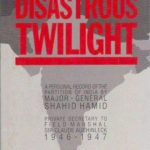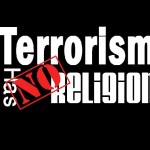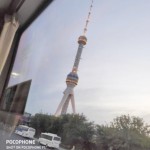By Syed Samiullah
Having nuclear warheads for state security has been a keen desire of every nation since the emergence of nuclear technology. However, the era of the race of having nuclear warheads can be divided into three phases: the era of cold war, the interregnum th at followed the period of cold war and the current multipolar world especially after 2010.
In the bipolar world, the great aspiration for possessing more and more nuclear arsenals from both the powers, Russia and America, ushered the world to strive for it. In the race, on one hand the numbers of nuclear warheads in both the states were increased rapidly while on the other hand some other states, following them, endeavored to get nuclear technology. India’s and then in response Pakistan’s move for the technology was also one of the consequences of the security of Pakistan.
The collapse of the Soviet Union in 1991 resulted in a unipolar world in terms of political affairs. Competition decreased after the end of the cold war, especially on nuclear issues. Despite the numerous difficulties the region experienced, the use of nuclear weapons was never a top priority of any nation. Even South Africa, which got nuclear power in1965, preferred to be de-nuclearized during the age. President F. W. de Klerk declared officially on March 24, 1993, in an address to the South African parliament, that his country had secretly produced and dismantled six nuclear bombs.
The current era is, however, quite different from both the phases of past. Especially after 2010 the world hasn’t remained unipolar. A great geopolitical competition has been observed among global and regional powers on two different surfaces. Though America, China and Russia are the most active and prominent players of this race but they are not the all in all like of the two powers in the cold war period.
Nearly all nuclear-armed states pursue their own nuclear capabilities and rivalries, and almost all of them are independent in how they decide on policies. They range greatly in character and objectives. For instance, Pakistan and India both have nuclear arsenals that provide some defense against great power piracy but are mostly intended to influence or deter one another. India on the other hand is also worried about China. In the meantime, North Korea is attempting to use its increasingly diverse nuclear weapons to intimidate South Korea and dissuade the US.
Although, future nuclear development by Iran, Saudi Arabia, or Turkey could influence the circumstances in some more ways. Israel’s tiny but advanced arsenal is expressly designed to fend off conventional threats in its region. Britain and France both also possess nuclear arsenals with global reach, despite the fact that currently both the countries are having only regional security concerns. Now, because such a world has never been existed before, drawing the perfect sketch that how the two-tiered, multi-actor nuclear world would behave in future in both peacetime and wartime is difficult.
However, in peacetime, it is important for every nuclear state to be more meticulous in handling conflicts with rivals as the existence of numerous nuclear rivals at both the regional and the great power level is likely to have across-the-board consequences. Comprehending the fact, Pakistan, as a nuclear state, showed an exemplary conduct when India provoked it by dropping Israeli-developed SPICE-2000 bombs on Balakot in the recent past. The strike provided Pakistan quite a big reason to respond harshly and extend the conflict to nuclear-war but the country showed a very responsible and positive gesture.
The benefits of global deterrence are genuine and of great significance in general but when observed and ponder over in various perspectives, they appear small because of the expected severe destabilizing repercussions. For instance, China modernizes her nuclear arsenals in order to face any threat from United States, India claims that its modernization in arms is China-centered; while Pakistan advances its arsenals in order to cope with India’s war frenzy. Consequently the chain involves in a race on a rounded track which, after completing one round, starts to turn upside down and then from India to Pakistan, from India to China and from China to the USA, all of them justify their further nuclear arms advancement and proliferation.
The alliance dynamics in a world with numerous nuclear competitors, as well as nuclear competition among the triangle of great powers, have the potential to intensify the incentives to engage in a security race. Thus, there is a significant danger of an uncontrolled, multidimensional crisis or war along with the optimism of stronger reasons for states to deliberately avoid any kind of conflict with their opponents in a world populated by numerous nuclear competitors or their allies. To depict the future picture more clearly, an exclusive debate like that of the iconic Waltz-Sagan debate is needed to be done among the nuclear experts so that all the inhabitants may have a safe and placid future.






